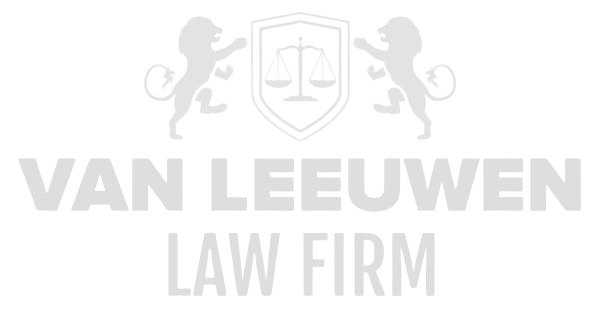In the fight against serious fraud, bribery, and corruption, innovation plays a key role. Fraudulent practices and corruption, especially at high levels, are constantly evolving, with criminals using increasingly sophisticated techniques to bypass systems and controls. Therefore, it is crucial that organizations and governments continuously renew and adapt their strategies. Innovation strategy and execution focus on developing and implementing new ideas, technologies, and processes that enable organizations to detect, combat, and prevent fraud more effectively.
This approach is essential in tackling the most advanced forms of financial crime, such as complex fraud, bribery, and corruption, where perpetrators often have substantial resources and expertise. Traditional methods and manual processes often prove insufficient to keep pace with the speed and complexity of modern fraudulent activities. This article explores how innovation can contribute to developing robust fraud prevention strategies, how new technologies can be deployed to detect and investigate fraudulent activities, and how organizations can effectively execute strategies to minimize the impact of fraud.
Innovation Strategies: The Importance of a Proactive Approach in Fighting Fraud
An innovation strategy in combating fraud focuses on anticipating constantly changing threats and developing solutions that are not only reactive but also proactive in addressing new risks. This requires a holistic approach that emphasizes not only detecting fraud but also preventing it. Rather than waiting for fraud to occur, organizations must think ahead and develop innovations that identify potential vulnerabilities in their systems and processes before they can be exploited.
A key part of this strategy is the use of predictive analytics and artificial intelligence (AI) to recognize fraud patterns. By systematically and advancedly collecting and analyzing data, organizations can detect trends and suspicious behaviors that are otherwise difficult to identify. These technologies can help spot irregular transactions, suspicious interactions among employees, or the presence of risky connections in networks that may indicate potential fraud or corruption.
Besides technological innovations, a successful innovation strategy requires a culture of continuous improvement. Organizations must constantly evaluate their own processes, embrace new technologies, and make adjustments based on the latest insights and best practices. Implementing new approaches and technologies can not only enhance the effectiveness of fraud detection systems but also transform the overall organizational culture, placing ethical behavior and transparency at the core.
Execution of Innovation: Implementing Technologies and New Strategies
Developing innovative strategies is only the first step; effective execution of these innovations is often where challenges arise. Implementing technologies and processes to combat fraud requires careful planning, training, and integration into existing systems. Innovation strategies must align well with an organization’s current infrastructure so that new technologies do not cause disruption but instead increase the effectiveness of fraud detection mechanisms.
One example of technology enabling successful innovation execution is blockchain. Blockchain technology provides a way to securely and transparently record data, significantly reducing the possibility of data manipulation or forgery. By integrating blockchain into financial systems, organizations can establish accountable and transparent data management processes, making it much harder for fraudsters to conceal irregularities.
Automation also plays a crucial role in innovation execution. By automating repetitive tasks, companies can reduce the workload on their employees while simultaneously improving the accuracy of their controls. This not only minimizes human errors but also enables the processing of larger amounts of data, increasing the speed of fraud detection. In an era where data volumes are growing exponentially, integrating automated analytical tools and AI is essential for timely and accurate assessments of suspicious activities.
The success of innovation execution also depends on acceptance within the organization. Employees need to be well trained and convinced that new technologies and processes make their work more efficient and secure. This can only be achieved through engagement and clear communication about the benefits of innovations and how they help effectively combat fraud and corruption.
Innovation and Collaboration: The Importance of External Partners and Information Sharing
In the fight against complex fraud and corruption, collaboration is essential. Innovation strategies must be developed not only internally but also externally. This means organizations can align their technologies and approaches with other companies, government agencies, legal entities, and external experts who can provide valuable information and insights. Fraud and corruption are often cross-border issues involving multiple parties and countries. Sharing knowledge and technology can therefore lead to much more effective results.
A good example of external collaboration is integrating data from public and semi-public sources containing information about suspicious activities. Public registers such as tax data, commercial registers, and legal documents can be linked to internal data to identify suspicious transactions or connections that might otherwise go unnoticed. Innovation strategies can be strengthened by access to these broader data sources, resulting in deeper and more refined analyses of possible fraud or corruption.
Furthermore, collaboration with external technology partners can facilitate the execution of innovations that might otherwise be difficult to realize. External technology companies specializing in fraud detection can provide valuable tools and platforms that help organizations identify and prevent fraud faster. These tools may include behavioral analyses, risk assessments, or even advanced AI systems that automatically recognize suspicious patterns. By integrating such technologies, organizations can significantly strengthen their fight against fraud and corruption.
Innovation Strategies and the Role of Policy Changes in Fraud and Corruption Prevention
In addition to technological innovations, policy change plays a crucial role in tackling fraud and corruption. Developing new strategies to prevent fraud can only succeed if policy changes also occur that ensure the involvement of all stakeholders. Innovation strategies must include not only technology and processes but also a cultural shift within the organization.
This may mean introducing stricter ethical standards or requiring more transparency in decision-making, especially for large contracts or business partnerships. Policy changes may also relate to how employees are trained and how they handle reporting suspicious activities. By renewing policies, organizations can better position themselves to prevent and detect fraud and corruption effectively.
Additionally, policy changes can help strengthen organizational integrity. When companies actively implement policies aimed at fraud prevention and protecting integrity, they create an environment where fraudulent activities are less likely to occur. These policies must be clearly communicated to all employees so they understand the expected standards and the consequences of corruption or fraud.
Innovation as the Key to Effective Combat of Fraud and Corruption
Innovation strategies and execution play a crucial role in enhancing the fight against serious fraud, bribery, and corruption. Organizations that can develop and effectively implement new technologies and processes are better equipped to detect and prevent fraudulent activities early. Innovation brings not only technological progress but also fosters a cultural shift that strengthens ethical standards within an organization and increases employee engagement in fraud prevention.
Combined with collaboration with external partners and continuous policy review, innovation can make a significant difference in the effectiveness of fraud prevention and detection. Although implementing innovative strategies presents challenges, it offers the opportunity to respond more flexibly and dynamically to the ever-changing methods of fraudsters and corrupt actors. Therefore, embracing innovation is not only a strategic choice but also a necessary condition for success in the fight against serious fraud, bribery, and corruption.















